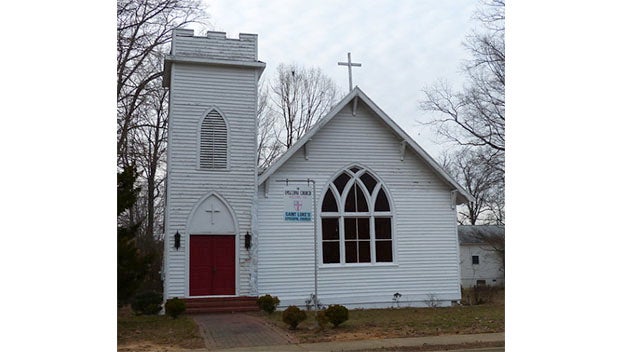Historical church to be dedicated
Published 8:00 am Wednesday, August 9, 2023
|
Getting your Trinity Audio player ready...
|
A state historical marker highlighting the history of a Kenbridge church will be dedicated on Sunday, Aug. 13, starting at 10 a.m., at the marker’s location on 409 N. Broad Street.
St. Luke’s Episcopal, which began as a post-Civil War mission school and chapel founded by a formerly enslaved African American woman, was built in 1926.
The historical marker was issued by the Virginia Department of Historic Resources (DHR).
Sponsored by former members of St. Luke’s Episcopal Church, the marker was approved for manufacture and installation in 2022 by the Virginia Board of Historic Resources, which is authorized to designate new state historical markers.
The dedication ceremony will feature speeches by former members of St. Luke’s Episcopal Church, including Myrna Smith Taylor, Xuri Maurice Allen, and Gloria T. Allen. Patricia Harper Tunley, a friend of St. Luke’s, will preside over the ceremony.
Wanda Hill and Jacqueline Haskins, both friends of St. Luke’s, will perform a song after the mayor of Kenbridge, Wanda Morrison, gives the opening remarks.
Susan B. Haynes, Bishop of the Diocese of Southern Virginia, will lead the marker dedication and unveiling.
MORE ABOUT CHURCH HISTORY
According to the DHR, St. Luke’s Episcopal Church traces its roots to Trinity, an African
American mission school and chapel established during the Reconstruction era by Mary McFarland Jennings was born enslaved near Kenbridge ca. 1823 and sent to the North by her white father.
Jennings returned to Lunenburg County and founded Trinity in the 1870s in the former community known as McFarland’s. Jennings’s successors moved the mission to Kenbridge, where they bought land in 1921 to build a new church called St. Luke’s Episcopal. The Rev. James Solomon Russell, a well-known Episcopal priest who founded the Saint Paul Normal and Industrial School (later Saint Paul’s College) in Lawrenceville, was one of St. Luke’s trustees.
In 1961, the Kenbridge community used St. Luke’s as a temporary classroom for Black students when the local segregated schools became overcrowded.
The new historical marker will read: “St. Luke’s Episcopal Church, built in 1926, emerged from a Reconstruction-era mission school and chapel for African Americans known as Trinity. Mary McFarland Jennings, born into slavery nearby ca. 1823 and sent to the North by her white father, had returned to Lunenburg Co. and established Trinity in the 1870s in the now-vanished community of McFarland’s. Her successors moved the mission to Kenbridge and bought land here in 1921 for a new church to be called St. Luke’s. Among its trustees was the Rev. James Solomon Russell, a prominent Episcopal priest and educator. The church served as a temporary classroom when local segregated schools were overcrowded in 1961. Episcopal services ceased in 2021.”
Virginia’s historical highway marker program began in 1927 with the installation of the first markers along U.S. Route 1.
It is considered the oldest such program in the nation. Currently there are more than 2,600 state markers, mostly maintained by the Virginia Department of Transportation.



